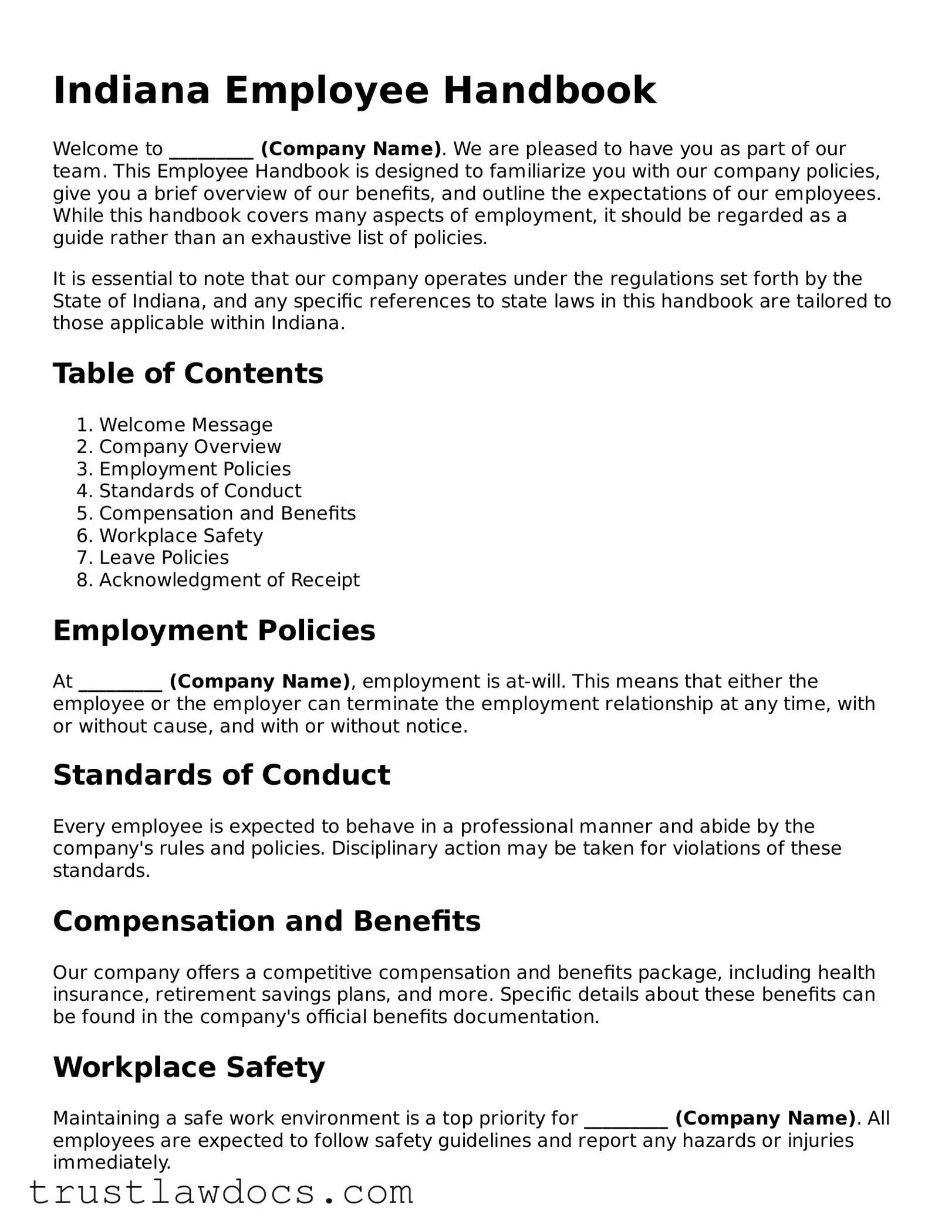What is an Indiana Employee Handbook?
An Indiana Employee Handbook is a document that outlines the policies, rules, and expectations for employees of a company located in Indiana. It includes information on company culture, procedures, and legal obligations for both the employer and the employees.
Do all Indiana businesses need to have an Employee Handbook?
While not legally required for all businesses, it is highly recommended that any Indiana business with more than a few employees have an Employee Handbook. It can help in setting clear expectations and may also protect the company in legal disputes.
What topics are typically covered in an Indiana Employee Handbook?
An Employee Handbook usually covers topics such as attendance policies, dress code, code of conduct, anti-discrimination policies, harassment policies, safety and health procedures, compensation and benefits, and grievance procedures.
Can an Employee Handbook be used as a legal document?
While an Employee Handbook is not a contract, it can be referred to in legal proceedings to demonstrate the company’s policies and the employee's acknowledgment of them. It is important for it to include a disclaimer stating that it is not a binding contract.
How often should an Indiana Employee Handbook be updated?
It's advisable to review and possibly update the Employee Handbook annually. However, if there are changes to federal or state laws, or significant changes within the company, it should be updated accordingly to reflect these changes.
Should employees sign the Employee Handbook?
Yes, it is a good practice to have employees sign a receipt or acknowledgment form indicating that they have received, read, and understood the Employee Handbook. This can provide protection for the company in future disputes.
Who is responsible for creating and updating the Indiana Employee Handbook?
Typically, the human resources department is responsible for creating and updating the Employee Handbook. However, final approval usually comes from senior management or the legal department to ensure compliance with laws and company policy.
How can a company ensure that the Employee Handbook complies with Indiana laws?
To ensure compliance, it is advisable to consult with legal professionals who are familiar with Indiana employment laws and federal standards. They can advise on required policies and help in adapting the Handbook to meet legal requirements.
What if an employee violates a policy outlined in the Employee Handbook?
If an employee violates a policy, the disciplinary measures outlined in the Employee Handbook should be followed. This ensures that all employees are treated fairly and that there are clear consequences for policy violations.
Where can I find templates or examples of Indiana Employee Handbooks?
Templates and samples of Employee Handbooks can be found online through legal resources and HR websites. However, it is important to customize any templates to fit your specific business needs and to ensure compliance with Indiana state laws.
